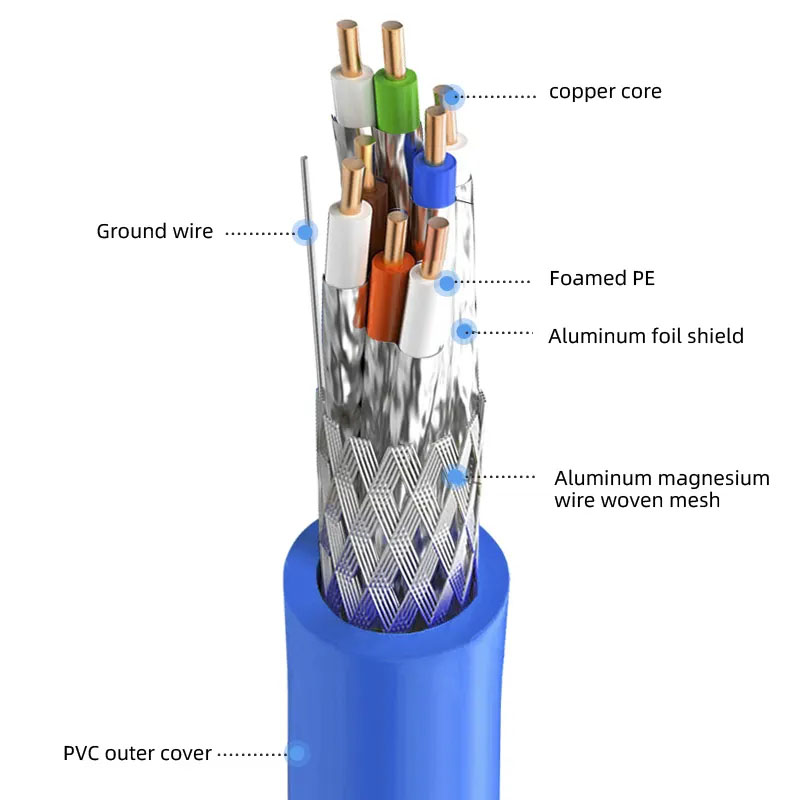The main difference between CAT8 and CAT7 Ethernet cables is the data transmission speed and frequency range they support, which in turn affects their usage scenarios. CAT7 Ethernet cable: Supports data transfer rates up to 10 Gbps over a distance of 100 meters. Operating frequency up to 600 MHz. Ideal for high-speed network applications in data centers, enterprise environments and high-performance home networks. Provides reliable connectivity for demanding tasks such as multimedia streaming, online gaming and large file transfers. Excellent immunity to electromagnetic interference (EMI) and crosstalk, making it ideal for environments with high interference levels. CAT8 Ethernet cable: Supports data transfer rates up to 25/40 Gbps over a distance of 30 meters (for 25 Gbps) or 24 meters (for 40 Gbps). Operating frequency up to 2000 MHz (2 GHz). Designed for the ultra-high-speed networking requirements of specific professional and industrial environments such as data centers, server rooms and high-performance computing environments. Ideal for emerging technologies and applications that require large amounts of bandwidth, such as virtualization, cloud computing, and large-capacity data storage. Provides advanced immunity to EMI and external noise, ensuring reliable performance in challenging electromagnetic environments. In summary, CAT7 Ethernet cable is suitable for 10 Gbps network applications and is typically used in environments that require high-speed data transmission and strong EMI immunity. CAT8 Ethernet cables, on the other hand, are designed for ultra-high-speed data transmission and are suitable for cutting-edge network scenarios that require extremely high bandwidth and performance. Therefore, the choice of CAT8 and CAT7 Ethernet cables depends on the specific data transmission requirements and environmental conditions of the network application.
Post time: Jan-31-2024
